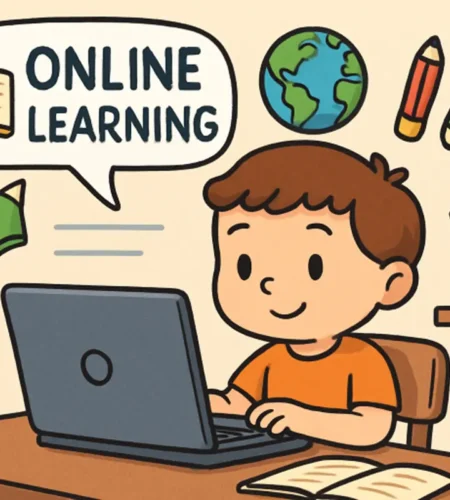The Changing Landscape of Elementary Education
The world of elementary education is evolving quickly, and digital learning is at the heart of this transformation. While traditional classrooms remain a mainstay, virtual options now expand access and flexibility for families who desire alternatives. The rise of K12 elementary programs illustrates this shift, offering high-quality online instruction that adapts to individual learning styles and family schedules. These programs play a crucial role in reimagining how and where young students learn, helping to bridge gaps for learners with diverse needs or those seeking more specialized instruction. Expansion of technology in the classroom, together with shifting societal needs, means that digital tools are more than supplemental—they are foundational. Families are turning to online options to support unique education plans, facilitate mobility, and address health or safety considerations. As awareness and adoption grow, online learning promises to impact the future of elementary education for years to come.
Benefits of Online Learning for Young Students
Online learning brings a host of advantages to elementary-aged children. Personalized pacing allows each student to move through material at a speed that’s right for them, reducing the stress often found in traditional classrooms. This flexibility makes it easier to accommodate various learning needs, keep students engaged, and focus on both strengths and areas of improvement. Many programs foster student agency, helping children develop skills in time management, responsibility, and self-motivation—traits that serve them well beyond their elementary years.
- Customizable instructional experiences and schedules
- Access to broader subject offerings and enrichment activities
- Early digital literacy skill development is critical for the 21st century
Families also appreciate the ability for their children to explore interests in depth, whether that’s through advanced math modules, creative arts, or science explorations not available at their local school. Through curated online resources and expansive digital libraries, students discover a world of information right at their fingertips, sparking curiosity and encouraging independent learning.
Overcoming Challenges in Virtual Classrooms
Despite its many benefits, transitioning to online learning can present obstacles for elementary learners and their families. Common concerns include ensuring meaningful peer interaction, managing distractions, and handling technical issues effectively. Screen fatigue can also be a hurdle, so structured breaks, hands-on activities, and offline assignments are essential for maintaining a healthy balance. Creative solutions are emerging to address these hurdles. Some schools leverage virtual clubs and collaborative projects to foster connection, while others provide tech support lines and parent training sessions to minimize frustration. Districts nationwide are piloting mentorship programs, virtual assemblies, and streamlined communication platforms to support the social and emotional well-being of young digital learners.
Engaging Young Minds in a Digital Space
Engaging elementary students online requires innovative teaching and understanding what captivates young minds. Gamified learning modules turn lessons into playful challenges, integrating badges, leaderboards, and story-based adventures to increase motivation. Interactive tools such as polls, quizzes, and virtual field trips add an element of fun, while group projects encourage students to collaborate using cloud-based documents or video conferencing.
- Gamified and interactive lesson modules
- Frequent collaboration through group work and discussions
- Digital storytelling, animation, and multimedia presentations
These dynamic experiences keep learning fresh and can help children develop a sense of community with classmates, even from afar. Digital storytelling, in particular, allows students to practice writing and communication engagingly, boosting literacy and creative skills.
The Role of Families in Online Learning Success
Family engagement can be a game-changer for elementary students in virtual environments. Parents and caregivers are often closely involved in their child’s daily routines, helping set up a distraction-free workspace, ensuring assignment completion, and communicating with teachers. This increased involvement often leads to stronger academic habits and lifelong learning skills. Schools frequently provide training sessions and resources for families, turning educational success into a true partnership. Many parents have noted a deeper understanding of their child’s strengths and challenges and appreciate witnessing the learning process firsthand.
Technology Tools Fueling Student Achievement
Adaptive technology lies at the foundation of effective online elementary education. Interactive whiteboards and real-time feedback systems allow teachers to monitor student progress and adjust instruction immediately. Platforms with built-in analytics deliver critical insights, enabling targeted interventions when a child struggles. Resource-rich programs provide access to everything from digital libraries and virtual science labs to art creation suites and language learning platforms. Modern educational software also supports differentiated instruction, ensuring that children who need additional practice—or those who are ready to accelerate—have the right tools. These advances reduce the digital divide and bring equity into the classroom, allowing every student to succeed, regardless of background or location.
Real-World Examples and Success Stories
Across the country, school districts and individual elementary schools have reported meaningful gains since implementing virtual learning options. Some have documented improved reading and math scores, while others highlight better attendance and higher student engagement. For example, a Virginia school district credited a mix of live video instruction and self-paced, interactive lessons with building independence and fostering a love for reading. Additionally, teachers note that students who once felt overlooked thrive thanks to customized learning supports and greater flexibility. These stories demonstrate the powerful impact of thoughtfully implemented online elementary programs and continually inspire new education delivery methods.
Future Trends in Online Elementary Education
The future of online elementary education is brimming with possibilities. Artificial intelligence is already making waves, tailoring lesson paths to individual learning profiles and ensuring no child is left behind. Virtual and augmented reality will soon bring immersive history and science lessons into students’ living rooms. As industry leaders, researchers, families, and teachers share their experiences, ongoing course design, assessment, and support improvements will keep driving the field forward. As technology and educational best practices evolve, online learning is poised to remain a central component of elementary education. The emphasis will remain on equity and access, ensuring every child can thrive in the digital age.
Conclusion
Online learning is no longer a supplemental option but a vital force reshaping how children access education. From personalized instruction and innovative digital tools to stronger family involvement, the benefits are clear, even as schools refine solutions for challenges like engagement and social connection. Success stories across the country highlight the adaptability and promise of these programs, proving that students can thrive in virtual environments with the proper support. As technology advances and educational strategies evolve, online learning will remain a cornerstone of accessible, flexible, and forward-thinking education—empowering the next generation to learn, grow, and succeed in a digital age.


Comments